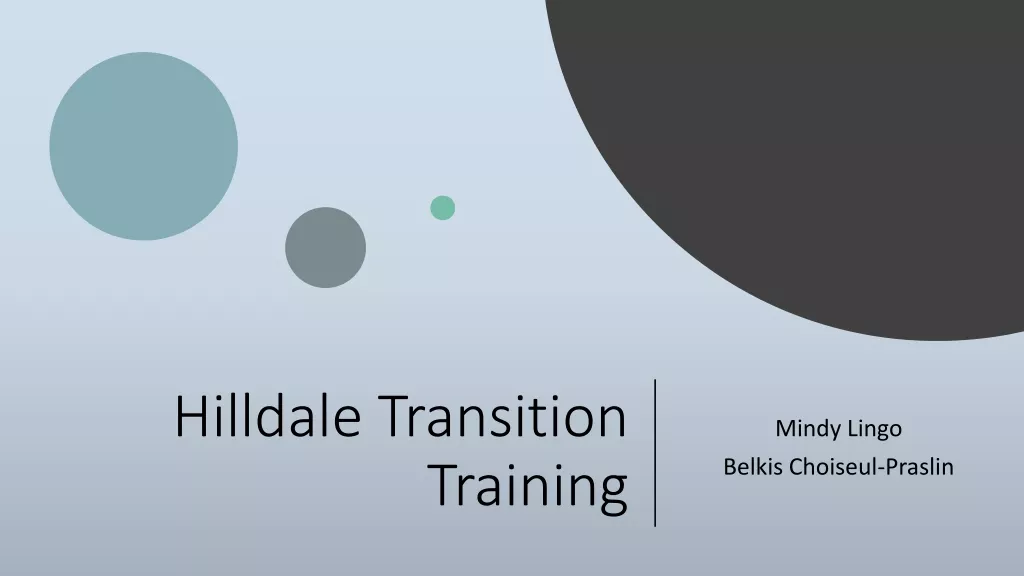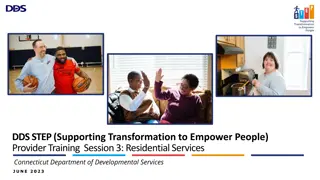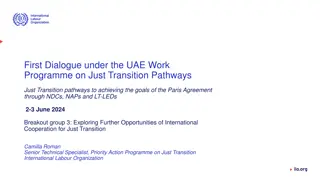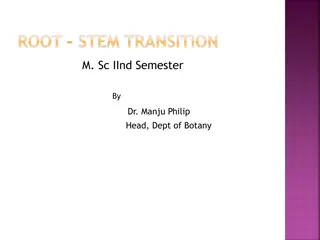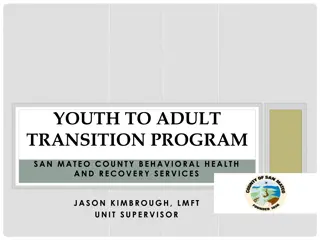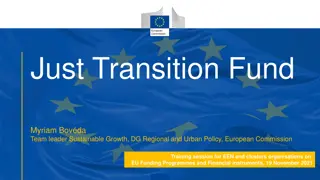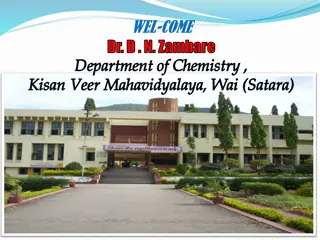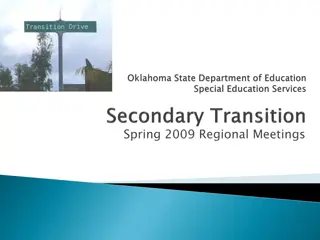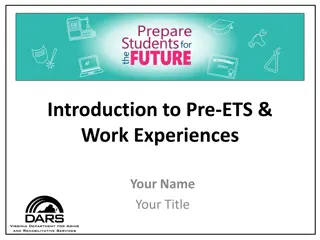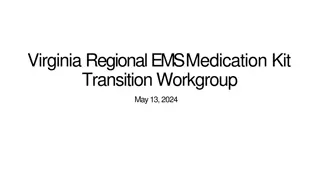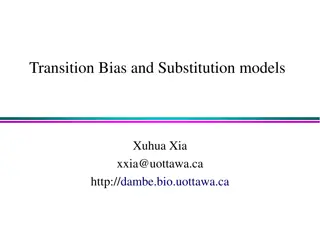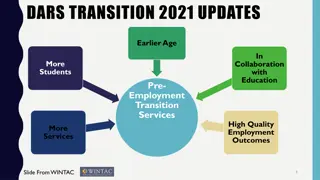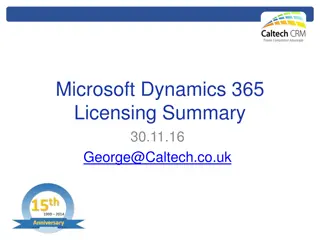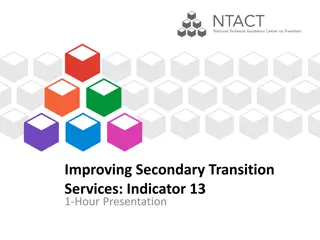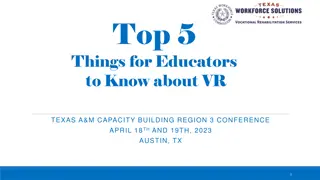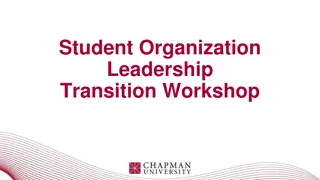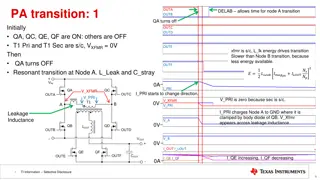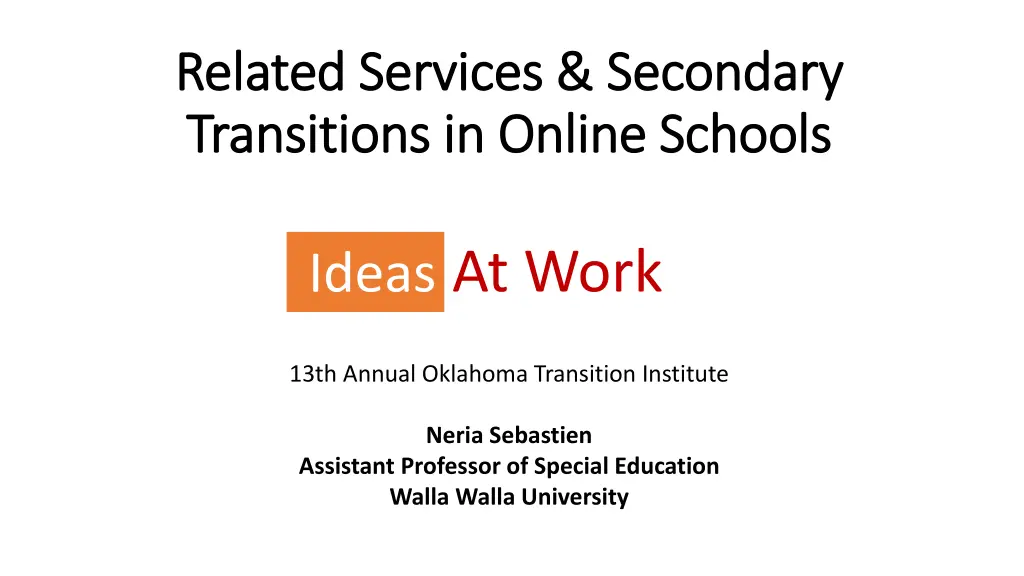
Transition Services and Planning in Online Schools: Key Provisions and Federal Requirements
Discover the importance of transition services in online schools, including key provisions for effective planning and federal laws mandating early initiation. Learn about measurable goals, assessment, and coordination with adult agencies to support students with disabilities in their journey towards further education and independent living.
Uploaded on | 2 Views
Download Presentation

Please find below an Image/Link to download the presentation.
The content on the website is provided AS IS for your information and personal use only. It may not be sold, licensed, or shared on other websites without obtaining consent from the author. If you encounter any issues during the download, it is possible that the publisher has removed the file from their server.
You are allowed to download the files provided on this website for personal or commercial use, subject to the condition that they are used lawfully. All files are the property of their respective owners.
The content on the website is provided AS IS for your information and personal use only. It may not be sold, licensed, or shared on other websites without obtaining consent from the author.
E N D
Presentation Transcript
Related Services & Secondary Related Services & Secondary Transitions in Online Schools Transitions in Online Schools At Work Ideas 13th Annual Oklahoma Transition Institute Neria Sebastien Assistant Professor of Special Education Walla Walla University
Todays Learning Targets I can reflect on the purpose of Transition services. I can discuss the implications of online school landscape. I can discuss the delivery of related service in the online secondary environment. I can discuss the role of related service in transition planning.
Collective Purpose Our Ensuring that all children with disabilities have available to them a free appropriate public education (FAPE) that emphasizes special education and related services designed to meet their unique needs and prepare them for further education, employment and independent living. [34 CFR 300.1(a)] [20 U.S.C. 1400(d)(1)(A)
Federal law requires that transition planning take place and be in effect no later than when the child turns 16; however, IEP teams may determine it is necessary to Transition Services (IDEA) begin planning at an earlier age. IEPs must be updated annually. In Oklahoma, transition planning must begin by the time the student turns 16 years of age or upon entering 9th grade, whichever occurs first.
Eight Key Provisions for Transition Planning 1. Invite the student 2. Age appropriate transition assessment 3. Preferences, Interests Needs, Strengths (PINS) 4. Measurable Postsecondary Goals 5. Transition Services 6. Course of Study 7. Measurable Annual Goals, Objectives when necessary 8. Coordinate Services with Adult Agencies
Transition service Transition service a coordinated set of activities a coordinated set of activities for a child with a disability that (a)is designed to be within a results oriented process, that is focused on improving the academic and functional achievement of the child with a disability to facilitate the child s movement from school to post-school activities, including: postsecondary education, vocational education, integrated employment (including supported employment), continuing and adult education, adult services, independent living, or community participation; and 6
Transition service Transition service a coordinated set of activities a coordinated set of activities for a child with a disability that (b) is based on the individual child s needs, taking into account the child s strengths, preferences, and interests; and includes: instruction, related services, community experiences, development of employment and other post-school adult living objectives, and, if appropriate, acquisition of daily living skills and provision of a functional vocational evaluation (IDEA, 2004; 20 U.S.C. 1401(34)) 7
Transition Services Where students are going postsecondary education vocational education integrated employment (including supported employment) continuing/adult education adult services independent living, or community participation What they need to get there instruction related services community experiences employment objectives adult living objectives, daily living skills a functional vocational evaluation
Oregons Online School Landscape Oregon s Online School Landscape 1 Full-Virtual District Run School 12 Virtual Public Charter Schools Full Virtual: The school has no physical building where students meet with each other or with teachers, and all instruction is virtual Focus Virtual: The school focuses on a systematic program of virtual instruction but includes some physical meetings among students or with teachers Supplemental Virtual: The school offers virtual courses but virtual instruction is not the primary means of instruction.
2017-2018 Supplemental Virtual Enrollment 210,955 Supplemental Virtual School 402 | 37% of Oregon s students were enrolled in online course(s) 2016 - 2017 Full & Focus Virtual Enrollment 11,000 | 12% students with disabilities Full & Focus Virtual School Districts 14
National Trends 2015-2016 Full Virtual Schools 34 States Focus and Supplemental Schools 21 States 528 Full-time Virtual Schools Nationwide (129 virtual schools in 2014- 2015)
Specially Designed Instruction in a Virtual Setting High Level and Effective Practices Emerging Tools Teacher Creativity Professional Development Related Services Models Virtual Contract Through ESD Transition Services Vocational Rehabilitation (VR) Agency Services Agencies (e.g., Oregon Commission for the Blind, Mental Health, Transition Liaisons (e.g., Parkrose Transition Program, Oregon)
Related Service Involvement in Transitions Related service providers are generally underutilized in Transition Planning Some lack specific IDEA/Transition knowledge & language Better Model: Related services aim to prepare, plan, and support children and families as the child transitions from one stage to another. OT, PT, SLP and other practitioners examine the child s current and projected needs within the child s present and anticipated contexts and environments.
Example: OT role in Secondary Transitions Example: OT role in Secondary Transitions Occupational therapy practitioners are experts in task analysis and environmental adaptations and apply them to daily living, education, work, leisure, and community participation. Recognizing the environment as a predominant factor that can enable or hinder occupational performance, occupational therapy practitioners holistically consider areas of occupation within context and setting to promote participation (AOTA, 2014). Transition services provide an opportunity for occupational therapy practitioners to apply the full scope of practice in the school setting (AOTA, 2011).
How they work together How they work together Related Service providers present at IEP meetings Provide input on student strengths, interests, and needs Function and participation in life real focus Anticipated contexts and environments Knowledge of disability
Current Practice (ORVA) Related service providers invited to transition table. Related service providers provide input on drafts Case Managers ask Related service providers for input Related service providers attend via Connect Sessions or send notes with substitute

